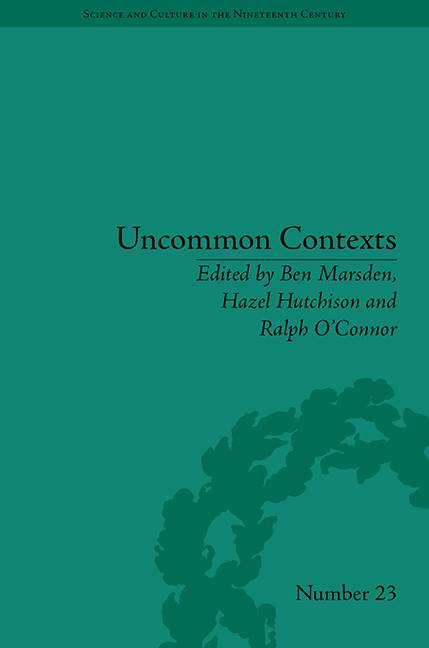Book contents
- Frontmatter
- Contents
- Acknowledgements
- List of Contributors
- List of Figures
- Introduction
- I Literary Genres of Science Writing
- II Pushing the Boundaries of ‘Literature and Science’
- Part III Science and Technology in Fiction
- 6 Elizabeth Gaskell's Social Vision: The Natural Histories of Mary Barton
- 7 ‘I Have in Mind a Study of a Scotch Seaman’: Witnessing Power in Joseph Conrad's Early Literature of the Sea
- 8 ‘The Telegraph has Other Work to Do’: Reading and Consciousness in Henry James's In the Cage
- Notes
- Index
7 - ‘I Have in Mind a Study of a Scotch Seaman’: Witnessing Power in Joseph Conrad's Early Literature of the Sea
from Part III - Science and Technology in Fiction
- Frontmatter
- Contents
- Acknowledgements
- List of Contributors
- List of Figures
- Introduction
- I Literary Genres of Science Writing
- II Pushing the Boundaries of ‘Literature and Science’
- Part III Science and Technology in Fiction
- 6 Elizabeth Gaskell's Social Vision: The Natural Histories of Mary Barton
- 7 ‘I Have in Mind a Study of a Scotch Seaman’: Witnessing Power in Joseph Conrad's Early Literature of the Sea
- 8 ‘The Telegraph has Other Work to Do’: Reading and Consciousness in Henry James's In the Cage
- Notes
- Index
Summary
It was a day of boisterous weather. A moderate southerly gale was causing the ship to ‘bite’ to windward, and as we passed through the wheelhouse Conrad noticed that the steersman was carrying considerable helm against that tendency. He recalled the time long ago when he would have trimmed or shortened sail to meet such a situation. I remarked that we could neither trim nor shorten the surface we exposed to the wind, for steel could not be furled … I took him out to the wing of the bridge, whence a good view could be had of the great beam seas running up and crashing on the plating of the hull as the Tuscania sped on her course. As one fascinated, he looked down from the height on the maelstrom boiling and curling alongside. He agreed that we had to sail on with all our ‘kites’ set as the builders had planned them … But science and technics had not yet superseded Palinurus [the helmsman in Virgil's Aeneid], and I think Conrad was heartened to hear that even the largest and most powerful of steamships had to be ‘nursed’ like any other ship in the great gales and terrific seas of the North Atlantic, and that, though infrequent, it was not unknown for them to be ‘hove to’ in the height of such a tempest, just as the windjammers were forced to do in the pitch off Cape Horn.
- Captain David Bone, master of the Anchor Line steamship Tuscania, with Joseph Conrad on passage from Glasgow to New York- Type
- Chapter
- Information
- Uncommon ContextsEncounters between Science and Literature, 1800–1914, pp. 145 - 166Publisher: Pickering & ChattoFirst published in: 2014

